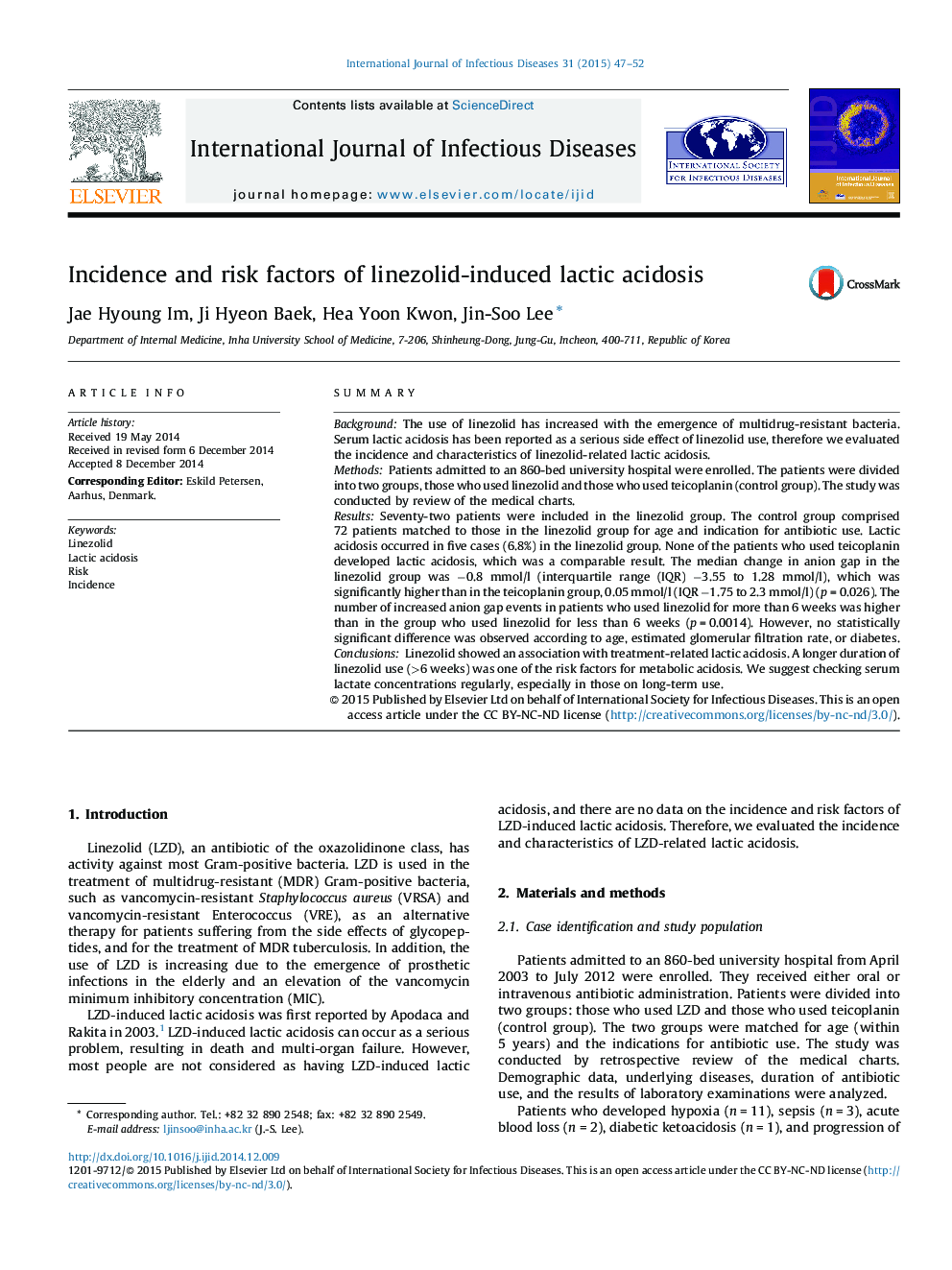| کد مقاله | کد نشریه | سال انتشار | مقاله انگلیسی | نسخه تمام متن |
|---|---|---|---|---|
| 3362235 | 1592064 | 2015 | 6 صفحه PDF | دانلود رایگان |
• We compared patients who used linezolid to a control group of patients who used teicoplanin and who were matched to the linezolid group for age and indication for antibiotic use.
• Linezolid showed an association with treatment-related lactic acidosis.
• A longer duration of linezolid use was one of the risk factors.
• We suggest checking serum lactate concentrations regularly, especially for those on long-term use.
SummaryBackgroundThe use of linezolid has increased with the emergence of multidrug-resistant bacteria. Serum lactic acidosis has been reported as a serious side effect of linezolid use, therefore we evaluated the incidence and characteristics of linezolid-related lactic acidosis.MethodsPatients admitted to an 860-bed university hospital were enrolled. The patients were divided into two groups, those who used linezolid and those who used teicoplanin (control group). The study was conducted by review of the medical charts.ResultsSeventy-two patients were included in the linezolid group. The control group comprised 72 patients matched to those in the linezolid group for age and indication for antibiotic use. Lactic acidosis occurred in five cases (6.8%) in the linezolid group. None of the patients who used teicoplanin developed lactic acidosis, which was a comparable result. The median change in anion gap in the linezolid group was −0.8 mmol/l (interquartile range (IQR) −3.55 to 1.28 mmol/l), which was significantly higher than in the teicoplanin group, 0.05 mmol/l (IQR −1.75 to 2.3 mmol/l) (p = 0.026). The number of increased anion gap events in patients who used linezolid for more than 6 weeks was higher than in the group who used linezolid for less than 6 weeks (p = 0.0014). However, no statistically significant difference was observed according to age, estimated glomerular filtration rate, or diabetes.ConclusionsLinezolid showed an association with treatment-related lactic acidosis. A longer duration of linezolid use (>6 weeks) was one of the risk factors for metabolic acidosis. We suggest checking serum lactate concentrations regularly, especially in those on long-term use.
Journal: International Journal of Infectious Diseases - Volume 31, February 2015, Pages 47–52
